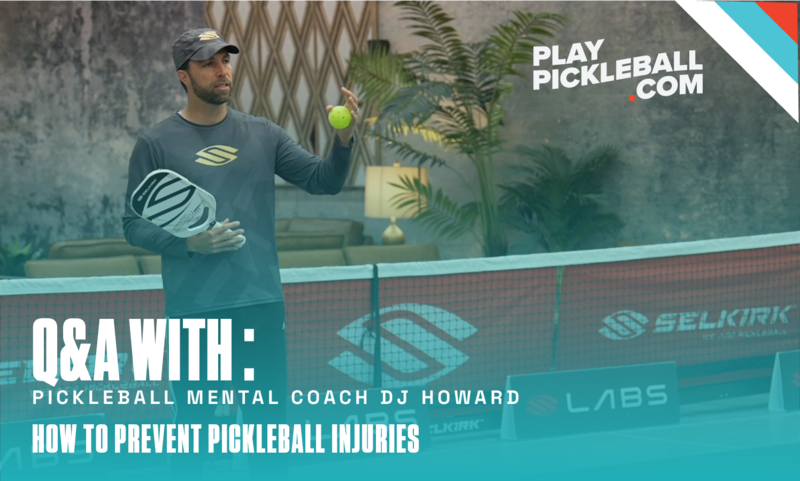Question:
How can I prevent injuries on the pickleball court?
DJ Howard:
To prevent injuries while playing pickleball, it's important to adopt a proactive approach. There are many things you can do to avoid getting injured — rather than being sidelined or having to nurse yourself back to health after the fact. Prevention is the best medicine! There are many steps that focus on preparation, technique, and safety. Here are some strategies to reduce the risk:
1. Warm-Up and Stretching
- Dynamic warm-up: Before playing, instead of simply hitting a few dinks, spend at least 5-10 minutes warming up your muscles. This could include light jogging, arm circles, and dynamic stretches to get your blood flowing.
- Stretching: Focus on flexibility by stretching key muscle groups, including your hip flexors, hamstrings, calves, quadriceps, lower back, and shoulders.
2. Protective Eyewear
- Protect your eyes with a pair of sport glasses: There are many inexpensive and stylish options available that fit well and are shatterproof, designed specifically to protect one's eyes when playing pickleball. This is especially important in today's game, where the ball moves faster than ever before.
3. Proper Footwear
- Wear court shoes that provide lateral support and grip, like a tennis court shoe: Running shoes or inappropriate footwear can increase the risk of ankle sprains and slips.
- There are also new pickleball-specific shoes that you may want to check out, because they are specifically designed with lateral movement and player comfort in mind.
4. Ease Into It
- Gradually increase your intensity and frequency of play to allow your body to adapt: Eager as you may be to play a ton (because the game is so addicting!), jumping into long sessions without proper conditioning can potentially lead to injuries.
5. Utilize Good Technique
- Strive for optimal pickleball techniques: While there are many acceptable styles of pickleball play, poor form can lead to muscle imbalance, which can cause improper joint function, especially to the shoulders, wrists, and elbows.
- Strive for good spacing between yourself and the ball: Whether you're too crowded or leaning too far, this increases the chance of being off balance, which could lead to a fall.
6. Don't Overdo It
- There is no need to overexert yourself: Take breaks, especially if you're feeling fatigued, as tired muscles are more prone to injury. Fortunately, pickleball has a break at the end of each game built right in!
7. Strength and Conditioning
- Core strength: Strengthening your core muscles can improve balance and stability, which helps prevent falls. A strong core also reduces low, mid, and upper back issues. I personally highly recommend Yoga and/or Pilates.
- Leg strength: Believe it or not, pickleball is largely a lower-body sport. Therefore, strong leg muscles, especially glutes and hamstrings, are helpful for balance and stability. Furthermore, flexibility in the hip/pelvic region will drastically reduce the risk of hip, knee, ankle, and lower back injuries.
- Arm and shoulder stretches: Rotator cuff exercises, forearm stretches, and overall upper body conditioning help reduce strain from frequent hitting, especially since pickleball is predominantly unilateral (meaning one side of the body is doing most of the work). Bilateral balance is key to limiting upper body injuries.
8. Hydrate Appropriately
- Inadequate hydration can lead to muscle cramps, dizziness, and fatigue, which increase the chance of injury. Drink water before, during, and after playing. There are also many electrolyte products on the market (far better than Gatorade) nowadays, so those may also be worth looking into.
9. Cool Down
- After playing, perform static stretches to help your muscles relax and reduce soreness.
By taking action on these preventive measures, you'll reduce the risk of injury and enjoy playing pickleball for many years. It is truly the sport of a lifetime!
- DJ Howard

